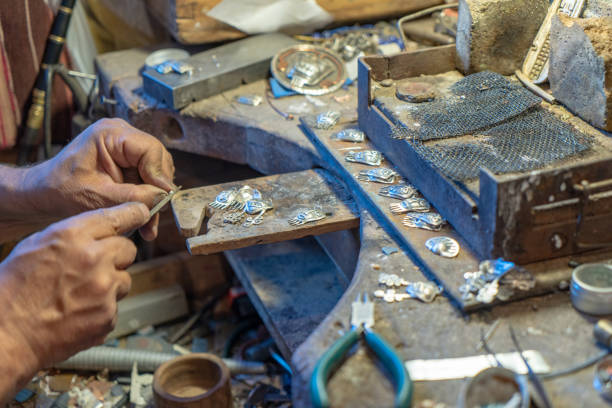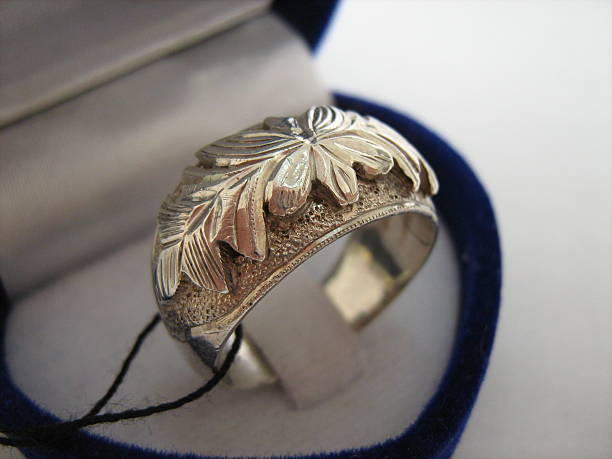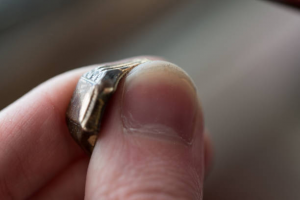When your cherished gold ring or necklace turns an unexpected silver tone, it might cause a moment of panic. But before you write it off as ruined, understand that this color change is often not a sign of fake gold but rather a consequence of wear, exposure to certain substances, or even the quality of the gold plating. This guide will explore ways to restore your gold jewelry’s original luster, whether it has a full plating, is made from purer gold, or is a white gold piece that’s lost its shine. We’ll delve into the reasons why jewelry changes color, such as sterling silver underlying a thin gold layer or the metal reacting with your skin oils, and how to remedy the situation.
Understanding the Basics
Gold in its purest form, 24 karats, is too soft for practical use in jewelry. It is often mixed with other metals like copper, silver, and zinc to create an alloy that is more durable. These other metals could also influence the color of the gold, which leads to the creation of variations such as yellow, white gold, and rose gold, each with a distinctive hue. Real gold jewelry tends not to tarnish like silver or base metals do — pure gold does not react with oxygen, which means it will not tarnish or rust. However, when gold is mixed with other metals to make it stronger, the resulting alloy might not resist tarnish as well. This is often seen in lower karat gold jewelry, where the percentage of gold is less, and there are more other metals present.
Gold-plated jewelry goes through a process where a thin layer of gold is applied to cover the surface of another metal, commonly copper or sterling silver. While gold plating gives the appearance of real gold, the thin layer can wear off, revealing the metal beneath. This can result in a piece of jewelry that looks silver or even turns black if the underlying metal tarnishes. When plated items are exposed to skin oils, perspiration, cosmetics, or cleaning agents, the plating can wear away more quickly, and the other metals might not hold their color as real gold does.
With time, a tarnished fake look can emerge due to wear and tear or exposure to harsh chemicals. If your necklace turns silver, it might simply mean that the gold plating has worn off to reveal sterling silver beneath, which, while still a precious metal, is not what you originally purchased. The silver itself could also tarnish, causing a dulled or even copper coloring over time, misleading you to think your jewelry is not real.

Preventative Measures
1. Regular Maintenance Tips
Keep your jewelry looking like purer gold by regularly cleaning it with a soft cleaning cloth after every wear. This will remove any residual oils, sweat, or environmental pollutants that could wear down the gold plating over time. Avoid exposing your jewelry to chemicals, including perfumes, chlorine, or cleaning products, as these can accelerate the degradation of the plating.
2. Best Cleaning Practices for Gold Jewelry
For gold-plated jewelry that has turned, a detailed cleaning session might be in order. This doesn’t require any specialized equipment – a simple solution of warm water and a few drops of mild dish soap can work wonders. Gently scrub the piece with a soft brush, such as a baby toothbrush, getting into the crevices to remove any dirt or debris that may be dulling the surface. Be sure to rinse the piece thoroughly afterward to remove any soap residue, and dry it with a polishing cloth to bring back the shine.
3. Storage Solutions to Prevent Tarnishing
How you store your gold-plated jewelry can also impact whether it turns silver or tarnishes. Keeping pieces separated in a jewelry box or stored in individual soft pouches will protect them from scratches and reduce exposure to the air, which can hasten the tarnishing process. For extra protection, consider using anti-tarnish strips in your storage area, which absorb sulphur and moisture from the air and can significantly extend the life of your plating.
DIY Methods for Fixing Tarnished Gold Jewelry
Even with the best care, your gold might not escape the inevitable tarnish, particularly if the plating is very thin or the piece is older. When the question arises of how to fix gold jewelry that has turned, several DIY methods can be quite effective.
| Solution | Ingredients | Steps |
|---|---|---|
| Baking Soda | Baking soda, Water | Mix one part baking soda with one part water to create a paste and gently apply. |
| Vinegar | White Vinegar, Water | Soak jewelry in a mixture of vinegar and water for 5-10 minutes, then rinse. |
| Soap and Water | Mild Dish Soap, Warm Water | Mix a few drops of soap in warm water, gently brush jewelry, rinse, and dry with a cloth. |
1. Cleaning with Household Items
The above table details some common household items that can be utilized for cleaning tarnished gold jewelry. You might also try utilizing a little toothpaste (a non-gel, non-abrasive variety) with a soft cloth, rubbing gently on the tarnished areas. After cleaning, make sure to rinse your jewelry well with clean water and dry it meticulously to prevent water spots.
2. Using Commercial Cleaners Designed for Gold
If your gold jewelry’s tarnish persists after trying the household methods, commercial cleaners specifically formulated for gold plating can help. These solutions are generally more potent and can handle more stubborn tarnishing or discoloration. Be sure to follow the manufacturer’s instructions diligently, as misuse could further damage your jewelry.

When to Seek Professional Help
Despite the best at-home care and restoration attempts, sometimes a professional’s touch is necessary to bring gold jewelry back to its original state. Not every piece that has turned silver can be restored with DIY methods, especially if the plating is extensively worn or the piece is intricately designed.
- Recognizing when DIY Methods are Insufficient It’s critical to recognize the signs that DIY methods for reviving your jewelry might not suffice. This includes persistent discoloration, flaking of the gold layer, or the appearance of green or copper coloring, suggesting that the base metal has oxidized. If your jewelry is a treasured heirloom or of significant monetary value, it’s wise to bypass home remedies altogether and go straight to a professional to avoid accidental damage.
- Finding a Reputable Jeweler Locating a reputable jeweler for the restoration process is key. Look for jewelers with positive reviews, preferably those who specialize in gold restoration. Recommendations from friends or family could also lead you to a trusted professional. Once you’ve found someone qualified, discuss the specific issue with your jewelry, the techniques they’ll use to restore it, and the expected outcome.
- The Process of Professional Restoration The professional restoration process may involve a thorough cleaning and polish, repair of any structural damage, and in some cases, re-plating the gold if necessary. Professionals have the advantage of access to high-grade polishing cloths, ultrasonic cleaners, and chemical solutions that might not be available or safe to use at home. If re-plating is the chosen route, jewelers can often mix one part alloy to create an exact match to the original gold color, ensuring that the restored piece looks as close to its original state as possible.
Conclusion
In conclusion, gold jewelry represents both an aesthetic and an emotional investment, and it can be disheartening to see it lose its luster and turn silver. However, understanding the causes, whether it’s due to worn plating revealing a sterling silver base or reactions with non-gold metals in the alloy, can help you take proper preventative and restorative steps. From cleaning with mild dish soap to using specialized jewelry cleaning solutions, and finally to seeking professional help for more severe cases, there are several avenues to restore your gold jewelry’s shine. Proper maintenance such as using cleaning cloths, avoiding chemicals, and storing your pieces correctly can go a long way in preserving the beauty of your gold jewelry. Whether you’re dealing with a simple case of tarnish or more serious wear, there is almost always a way to reclaim the brilliance of your cherished items.

FAQ
- Q1: Why does gold jewelry turn silver in color? A1: Gold jewelry may turn silver in color when the gold plating wears off to reveal the sterling silver or other metal beneath. Over time and with exposure to various elements, the thin layer of gold can break down, especially if the jewelry is frequently worn or exposed to abrasive substances.
- Q2: Can gold jewelry be restored if it has turned silver? A2: Yes, gold jewelry that has turned silver can often be restored. Simple cleaning methods using household items like baking soda or vinegar might suffice for light tarnishing. If the discoloration is due to plating wear, a jeweler can re-plate the item for you.
- Q3: How can I prevent my gold-plated jewelry from tarnishing? A3: To prevent gold-plated jewelry from tarnishing, you should regularly clean it with a gentle cleaning cloth, avoid exposure to harsh chemicals and environmental elements, and store the pieces in a dry place, ideally in anti-tarnish bags or cloths.
- Q4: What should I do if my DIY attempts at cleaning gold jewelry don’t work? A4: If your DIY cleaning attempts are unsuccessful, it’s recommended to seek professional assistance. Sometimes professional cleaning or re-plating is necessary to restore the jewelry’s appearance, especially if the tarnish is severe or the plating is heavily worn.
- Q5: Is it normal for pure gold to tarnish or change color? A5: Pure gold, which is 24 karats, does not tarnish or rust because it does not react with oxygen. However, lower karat gold jewelry, which contains a mix of other metals, can exhibit tarnishing or color changes due to the reaction of those other metals with environmental factors.







